“I once gave a woman a heart attack.”
Iran Carranza, 29, smiles as he tells me this. He’s about six foot tall, with broad arms; imposing, in a mud stained yellow rain jacket. “I jumped at her as she came in, and she was overwhelmed,” he explained.
We’re backstage at Fear Overload Scream Park, a Halloween haunted house attraction in Bayshore, California. The dressing room is large and L shaped. Blood spattered monster masks adorn one wall, and two makeup artists feverishly attach prosthetics at the other. It’s one hour till showtime.
Tens of thousands of people will troop through Fear Overload’s two venues over the next 20 days. They’ll pay $25 to $70 to be temporarily traumatized. The expectation is for carefully controlled fear.
And the owners, David Polanco, 29, and Nathan Polanco, 23, will take home around $200,000 in profit.
Yup, that’s $200,000 in 20 days
This is because the brothers are really good at scaring people. After seven years in the “boo” business they’ve refined the art of the scare — for massive profit.
A clawed hands reaches at me through the dark and I jerk away, trembling at the masked figures venomous look. I bump into something sticky as I back away and when I look, I see dark red blood dripping from my hand. Logically, I know this is fake and that the liquid’s a mix of water and silicon that’s $120 a gallon. But knowing doesn’t stop me freaking out.
I’m not a fan of horror. Disney movies make me tear up and I cover my face during CSI.
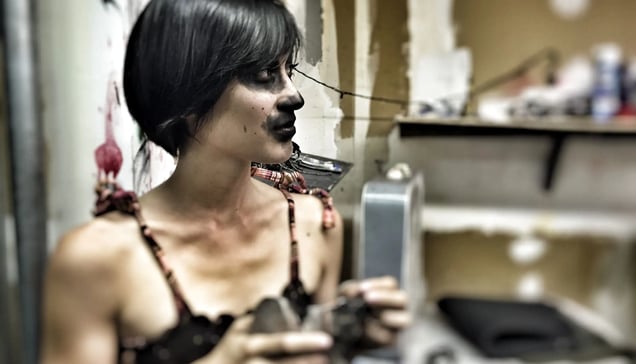
The business of haunted houses
There’s a growing market for “scare experiences” and I want to understand why.
And by growing, I mean HUGE.
The National Retail Federation says people will spend around $6.9 billion dollars for Halloween this year.
And Hauntworld — the haunted house publication that’s the industry bible — estimates around $400 million of that will be on haunted attractions. Split between 1200* haunts worldwide that averages $330,000 per haunt. Most of these are in America.
“Halloween as an industry will generate more revenue in 60 days than Hollywood will generate the entire year from January to October.”Hauntworld
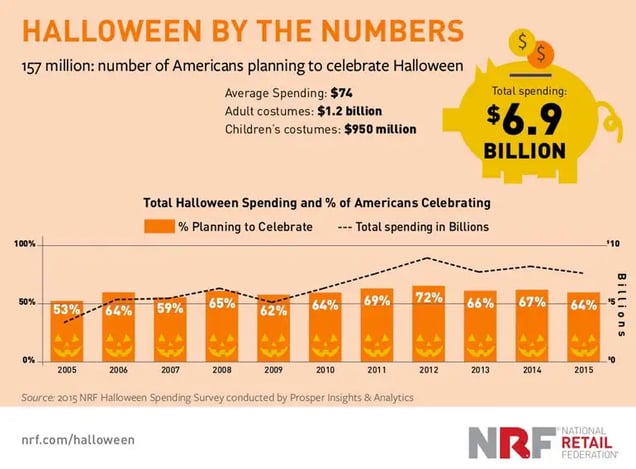
“After the startle and scream, we laugh. That is when we have this amazing opportunity to hijack our threat response and enjoy the ride,” scare sociologist Margee Kerr told me, when I asked why people go to these houses. She adds that haunted houses deliver scares by triggering a reaction from the senses, using different sounds, air blasts and smells.
But professionally scaring people into screaming — and coming back for more — involves a lot of sweat and stress. And business owners need to learn about the science of scaring. Yes, scare psychology is a thing.
“All the “mental chatter” running through our brain stops and we feel primal, even powerful,” Margee said. “We know that certain frequencies impact us in very different ways and can evoke different emotional responses.”
And this is created a number of ways.
“Everyone will jump with a loud noise,” David, told me. “But you don’t always want that.” David is all about the subtle scare, the silent lurker who leans in with a gap toothed grin or the bloodied clown that menaces you down a dark corridor.
Then there’s the low and high scares; hands that scratch at your ankles and ghouls cackling above your head.
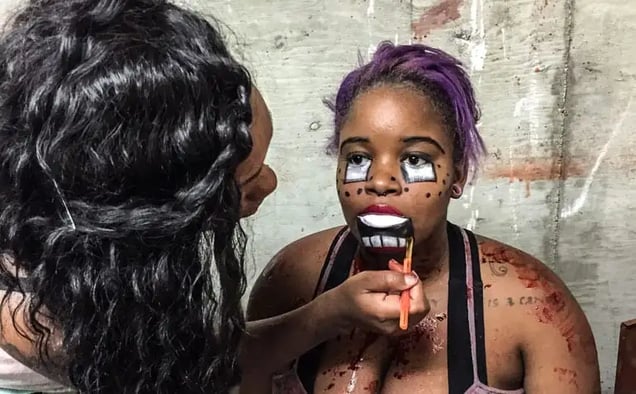
Now, I get that visitors might be tempted by this attraction; it’s a one time scare with a definite end.
But what about the actors who’ve chosen to spend their evenings standing in dark corners, rattling chains at people? There are easier ways to make minimum wage.
So was this about getting off on frightening people — and feeling powerful because of that?
David agreed to let me spend the evening trailing his staff around, and asking intrusive questions like whether they’re working here as an outlet for their rage, and if they’re OK with mentally damaging attendees.
Like Carlos Sanchez, 18, a newbie to the haunted industry. He’s a first year nursing student and hasn’t told his classmates about his job. For his audition he crawled on the floor, growling.
In person, he’s gentle, and unassuming. It’s hard to imagine being scared of him.
Did he want to be here because he’s frustrated at having to be nice to people all day, I ask? He doesn’t respond.

“We paid around $200,000 for year one costs,” David told me. David used money he’d raised from a drop-shipping venture he’d started in college. He sold that business and used the proceeds to invest in a catering company and haunted houses.
Startup expenses for Fear Overload Scream Park included raw materials for props and design, lighting designers, licensing suitably creepy music, and hiring a number of crew and actors. Plus insurance — which is high, as they’re considered a risky venture. Not all visitors adhere to the “no running, no drinking” rules, which can lead to broken arms.
And this was all before they could get to the fun stuff.
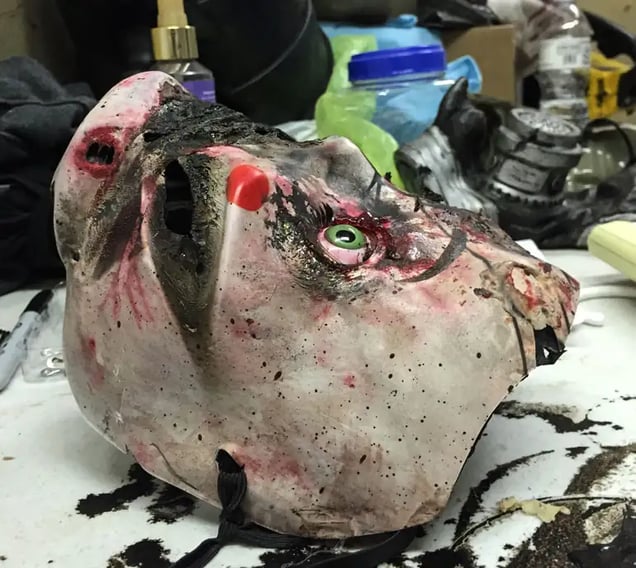
They had to learn about local regulations. Something they found out the hard way after Sacramento fire marshals set half their props on fire.
“To get a permit here, the fire marshals come with blowtorches and spray your stuff with fire,” David told me. “If it catches fire, you fail.”
Their equipment flamed up, and they had to spend money making it fireproof. This delayed their opening by a week.
But then six months went by and he started to feel the itch again. After all, he already had all the props, so costs would be cheaper…
The second year they broke even.
In their third year they started making money
Seven years later they’re finally in the green. Each brother takes home $100,000 from the 20 days their haunt is open. Plus, extra, that they put back into the business.
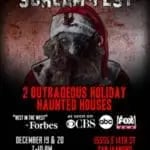

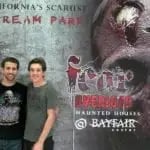
In 2014 they expanded into off season events with “My Bloody Valentine” in February and “Santa’s ScreamFest” in December. In 2015 they teamed up with Slipknot (yes, really) to produce Slipknot’s Scream Park in Sacramento.
But what drove them into the boo business to begin with?
It’s not the most obvious industry to get involved in.
David’s obsession with scary stuff started when he was young.
His mother, Christine Polanco, tells me that David and Nathan were fascinated with Halloween when they were small. When she took them around the neighborhood their eyes lit up at all the Halloween decorations, the grinning skulls and miniature coffins adorning people’s yards.
But they were inspired, not frightened.
When David was 13 and Nathan was 7 they started building their own haunted houses inside Christine’s garage. They plastered the walls in plastic and created a course for their friends to walk through. They spent all their money on props, building up a strange collection of evil looking clowns and blood soaked rags.
This became an annual tradition in the Polanco household. Even after David left home to study economics at UC Davis he still returned each year to host their Halloween garage haunts. Christine told me that because they were so focused on their haunt they rarely wore costumes. And they didn’t care about trick or treating.
Christine doesn’t know how the boys became so entrepreneurial. But it’s possible she was their inspiration; a self-made businesswoman who quit her job as an industrial engineer to focus on starting a real estate business, an industry she knew nothing about. She’s been doing this for over thirty years now.
The boys grew up seeing her focused on building her business, putting in 70-hour weeks – which paid off.
Christine looks like she’s in her early fifties, but has the energy of a twenty something. On Fear Overload Scream Parks 2015 Halloween opening night she’s wearing a short sleeved black tee and loose black pants, with open toed black sandals. A large yellow pad of paper is in her hands as she moves through the Fear Overload set.
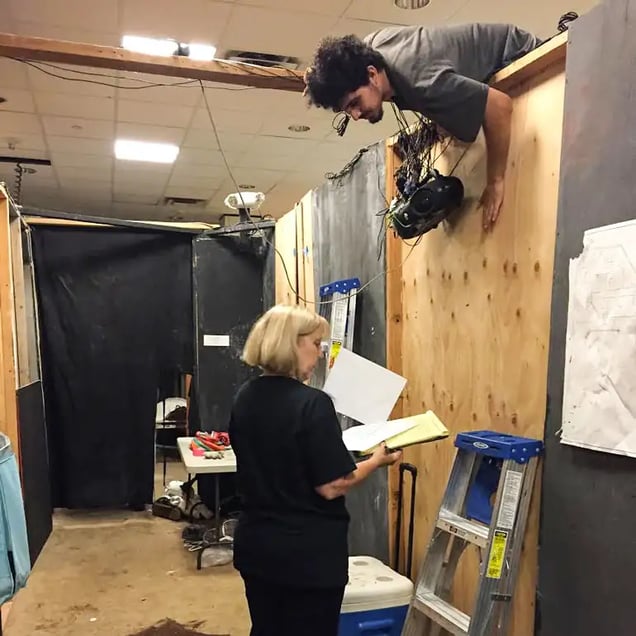
She crawls under an awning in the haunted hostel, gesturing to an actor. On hands and knees she raises her hand in a claw, scratching the floor. “You want to be inconspicuous,” she instructed. “Try different spots till you figure out what works.”
She checks her pad.
”We need someone in the shower,” she mutters, and calls out, “Who’s in the torture room?”
He’s become attuned to the psychology of fear, understanding how to frighten by manipulating people’s senses causes a good scare. Certain environments can provoke strong emotions, and the set he builds factors into this.
“I like the idea of going from being able to scare to being able to mentally scar people,” he says with a wide smile.
And this seems to be the common thread backstage, the real reason people — from staff to Silicon Valley CEO’S — are attracted to this industry. By definition, if you are the scare, than you aren’t scared, and it’s oddly therapeutic to feel you’ve overcome that, even temporarily.
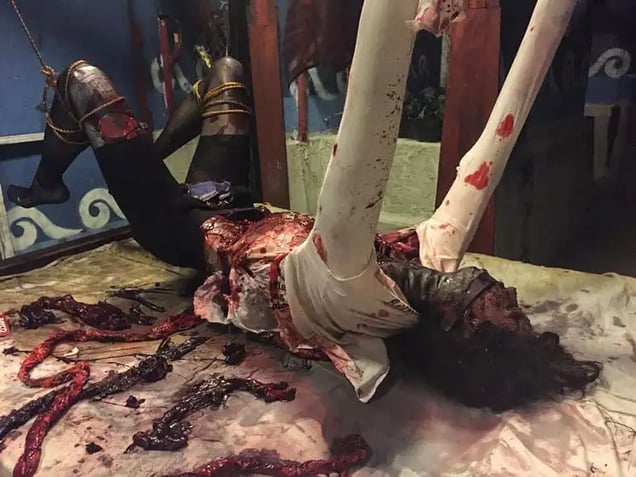
You can’t help but feel the haunted house business is becoming redundant in a world where it’s so easy to be scared online. And it’s hard to run a business which is only open one month of the year — you have to be on point to turn a profit.
“One of the biggest hurdles of the haunted attraction as a business model is the short time you have to make it profitable,” said Leonard Pickel, who runs haunted house consultancy Hauntrepreneurs.
“If you want to make money, you have to extend your season. Open earlier and stay open into November.”
But Pickel believes that understanding your margins and focus can lead you to success.
“A haunted house IS a business, and like any other business it has to be profitable to survive. If you are opening a business, then it should be to make money; lots of money. In haunting everything is a trade off; higher capacity decreases the quality of the experience, but decreasing the capacity means you make less money.”
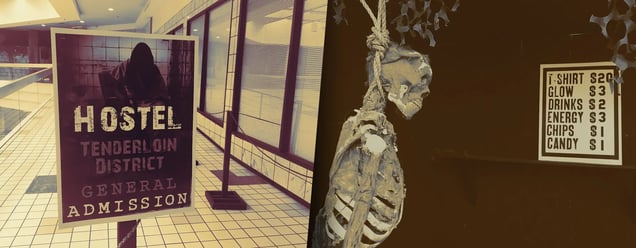
Fear Overload currently has two properties. They rent their buildings year round, storing their props there. They start working on their set designs in summer. They hire actors (mostly through Craigslist) a few weeks before they open.
“They have to scare us in their auditions,” Nathan Polanco said, explaining how potential actors are required to hide inside the haunt and pounce on them as they walk through. There’s a scream test; only the most terrifying get through.
Backstage, Christine has a quick pep talk for the actors. “We are not a kiddy show. I don’t want to hear boos,” she emphasizes. “We don’t want a heart attack but we want good scream.”
Nathan is in Sacramento at Slipknot’s Scream Park and David is in Bayshore, standing outside the entrance to “Hostel in the Tenderloin.”
The Tenderloin hostel set — a play on San Francisco’s most dangerous neighborhood — has visitors walk through a creepy building full of dirty dorm beds and blood stained shower cubicles. With people popping up to frighten them.
I lose all semblance of professionalism when a grinning clown leers at me through the darkness, and I screech. A chainsaw starts buzzing in his hand. I back away, and fingers grasp my feet. Panting, I fled, straight into a masked man with a melted face.
I moved down dark corridors chased by clanking chains and edged around a bed where a girl methodically pulled glistening intestines from her abdomen. It’s purple haired Yoshiie Martinez, 23. She glowered satanically at me. I can’t see the giggling girl who told me about her pumpkin spice latte anymore; she’s in her role and she’s terrifying.
A little later I watched a young couple emerge, pulling back black fabric, flashlights in hand.
It’s one of their first dates. They’re visibly shaking. And then they laugh and kiss.
“Haunted houses activate our threat response,” sociologist Margee Kerr explained to me. “High arousal states like fear share a lot with other arousal states, including sexual arousal. The release of dopamine, endorphins, and oxytocin flowing through our body makes us feel euphoric.”
So you’re going to remember the person you’re with. And it’s almost guaranteed to get you in the mood.
“I still scream like a girl,” David Polanco tells me when I ask if he’s become immune to the haunt. “I don’t like to be here alone.. late at night it gets creepy.”
But every scream is another dollar in his pocket.
And there’s blood on my hands.


Fear Overload Scream Park sells a large number of their tickets online. Their checkout process has a box asking people how they heard about the haunt. This lets David and Nathan see what form of outreach has been most successful, and how they should spend their marketing budget. More flyers? Facebook ads? Radio spots?
“It doesn’t matter how cool your Haunt is, if no one knows about it, then no one’s coming! Advertising is the single most important piece of the haunting puzzle and the hardest to write a check for,” said Leonard Pickel, who runs haunted house consultancy Hauntrepreneurs. Pickel created his first haunted house in 1976, and has built 200+ since.
Pickel said that the industry average is “$2 – $3 in advertising for every person who comes through your door.”

The current focus is building the business by reaching more people. The Polanco’s collaboration with Slipknot has helped them reach a wider audience and created a buzz about their event.
Slipknot has 18 million Facebook fans and when they mentioned their haunted house they crashed the website.
The collaboration does mean a revenue split (less money for the brothers) but the growth factor is enormous, and the possibility for franchising their event throughout the states is something they’re discussing.
The website checkout process takes you to a screen before payment, asking if you’d like “add-ons.” A Slipknot Scream Park T-shirt is $20, and a “Scaredy-cat care package” is $15. The scaredy cat package consists of four glow necklaces and three glowsticks. They note that this will be $20 on the door.
The majority of visitors are people on dates (yes, really), and splashing out on something to seem chivalrous is a common occurrence.
The lesson from this: Always be selling.



